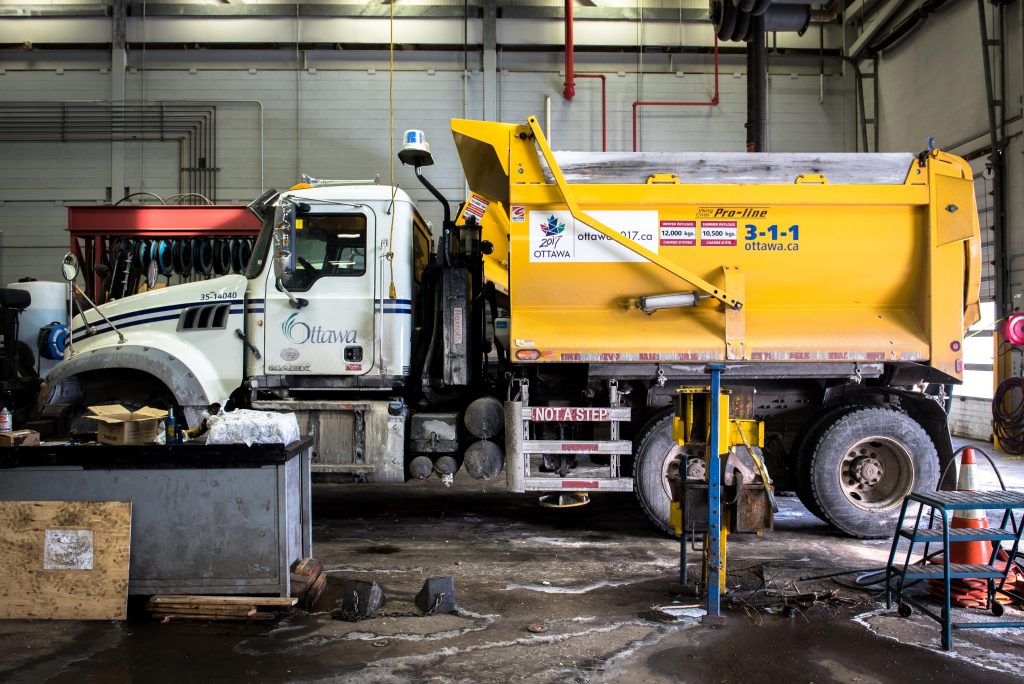City tests side guard to protect cyclists, pedestrians
By Liam McPherson
Somerset Coun. Catherine McKenney’s campaign to have safety guards installed on City of Ottawa trucks and snowplows has led to the launch of a pilot project in Centretown to test one the devices, which are designed to prevent the death or serious injury of cyclists and pedestrians beneath the wheels of large vehicles.
The metal safety guard, which has been installed on the underside of a snowpolow between the front and rear wheels, is the first of its kind in Ottawa. If the pilot is successful, McKenney’s advocacy could help safety guards become permanent fixtures on city vehicles.
McKenney began her high-profile push for the use of safety guards after the September 2016 death of Nusrat Jahan, a 23-year-old cyclist killed at the corner of Laurier and Lyon streets when she fell beneath a right-turning construction truck.
The Willis College business student had been cycling east in the segregated bike lane along Laurier Avenue when the heavy Tomlinson construction truck, travelling on Laurier in the same direction, turned south on Lyon.
McKenney organized a rally at City Hall on the day of Jahan’s death to push city officials to install safety guards on large vehicles.
Months before the fatal accident, city officials had recommended against making safety guards standard. In a January 2016 report, municipal staff cited a lack of support for the idea from Transport Canada.
In response, Mayor Jim Watson sent a letter to federal Transport Minister Marc Garneau, asking him to issue a national recommendation that municipalities adopt the safety guards. But there has been little progress on the issue.
McKenney had been in touch with a U.S-based company that donated the safety guard to the city for testing purposes.
“I worked with the company and the chair of the transportation committee, (Knoxdale-Merivale Coun.) Keith Egli, to get the guard installed,” said McKenney.
Initial concerns about inspection and maintenance complications have largely been alleviated, McKenney said, and she is now hoping that the pilot project will help her gain the support necessary for safety guards to become standard.
“Many of my colleagues support it,” she said. “They see it as a necessary method to protect pedestrians from getting pinned under these vehicles and avoiding devastating injury or death.”
City of Ottawa roads manager Luc Gagne told CBC recently that after two weeks of testing the guard “it looks like there are no issues at this point.”
“Fleet Services is pleased,” added McKenney. “It’s been easy for them to operate with the guard on the road.”
Each guard costs about $1,500 per vehicle to install. Such devices are already standard in the City of Halifax and in two Montreal boroughs. Ontario has no law requiring safety guards on large vehicles.
There is a growing worldwide initiative called Vision Zero, of which McKenney is a supporter. Its aim is to reduce road fatalities by changing road designs and making other changes to eliminate life-threatening hazards.
“The guards are a step towards that,” she said. “If I’m re-elected (in October’s municipal election), it’ll be a priority for me to ensure they become mandatory.”

